Blog by Steve Laug
I written about the estate lot that my brother and I purchased from an estate sale in Pocatello, Idaho. There were a lot of great pipes in the lot. I have written about the pipes we picked up in a previous blog: (https://rebornpipes.com/2016/10/07/a-good-day-hunting-orchestrated-between-british-columbia-and-idaho/). I also wrote of how my brother had stopped at an antique shop and found four amazing pipes. These included a Four Dot Sasieni Pembroke with a patent number, Pat.No. 150221/20, a Dunhill Root Briar Canadian EC 4R, a Charatan’s Make Canadian Sandblast 0121 and finally a Jost’s Supreme Diamond Shank bent billiard. I have restored and written blogs on three of the four pipes he found – Sasieni, Dunhill and the Charatan’s Make. Here are those links: (https://rebornpipes.com/2016/11/05/restoring-a-classic-find-a-sasieni-four-dot-london-made-pembroke/ ; https://rebornpipes.com/2016/11/06/restoring-another-classic-find-a-dunhill-4r-root-briar-canadian-ec/ ; and https://rebornpipes.com/2016/11/06/restoring-the-third-classic-find-a-charatans-make-0120-canadian/. I am now finished with the fourth pipe that – the Jost’s Supreme diamond shank bent billiard.
In earlier blogs I have written about restoring another Jost’s pipe that I found. When I restored that pipe it was a brand I had heard of but was unfamiliar with. I researched the web to find some information about the brand. Here is a link to the blog I wrote on the Jost’s Olde English Deluxe: https://rebornpipes.com/2016/09/03/josts-olde-english-de-luxesupreme-overstamped-j214-bent-billiard/. I am quoting several of the paragraphs that summarize what I learned about the brand.
“I looked up Jost’s pipes on the pipephil site and found a pipe that had the same stamping on the left side of the shank as the one I was working on. The right side had slightly different stamping in that it had the classic COM stamp circle where the one I had was two lines Made in over England. It also had a picture of the circle J stamp on the stem. There was a note there the tobacco shop proprietor was Mrs. Henry A. Jost. Her resident carver was Harvey Raspberry.”
I also found a blog that is called ClassicPipeShop that even had a catalogue of the pipes made by the Jost’s Shop or were imported by them for their store. I quote that blog once more as it places the new pipe that I am working on now.
“I did some more hunting online and I found a blog that did a great write up on Jost’s Pipe Shop and gave some definitive information on the brand and grades of the pipes. Here is the link if you wish to read a well written history of the brand and also some interesting details about shop blends of tobacco. http://classicpipeshop.blogspot.ca/2015/03/josts-pipe-shop-201-north-6th-street-st.html”
“I have included the section of the blog on the pipes. It covers a lot of information regarding the source of the pipes and the levels/grades of pipes. Remember that the one I am working on is a De Luxe/Supreme. I quote:”
“Jost’s Pipes are closely tied to Comoy’s. Many of Jost’s pipes have the standard Comoy’s shape number and the “Made in England” in a circle. If the Jost’s pipe doesn’t have the “Made in England” it is probably made by Harvey Raspberry.”
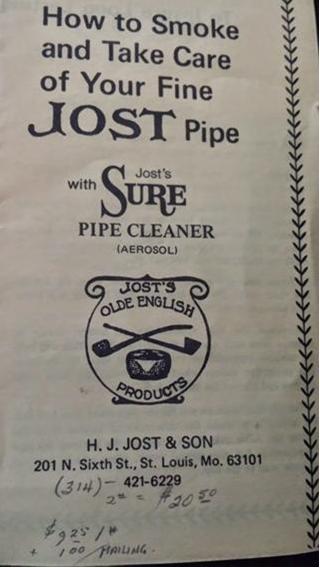 “If the pipe has a shape number that is preceded by a “J” that is a Comoy’s product without question. Typically these will have the words “Made in London England” on the reverse side of the shank from where the Jost stamp is made. There are always exceptions to the rule but 95% of the time, this is accurate.”
“If the pipe has a shape number that is preceded by a “J” that is a Comoy’s product without question. Typically these will have the words “Made in London England” on the reverse side of the shank from where the Jost stamp is made. There are always exceptions to the rule but 95% of the time, this is accurate.”
“Many different levels of pipes were offered by Jost’s Pipe Shop. From a 1950s catalog I have the following available:”
Jost Old English De Luxe: $85.00
These were typically of the highest… Grain is stunning and the briar is flawless. These are the grade you should look out for as they are great smokers.
*Jost Old English Supreme: (no pricing available)
The majority of the Old English version pipes you see are marked Supreme. These are stained in a darker color and are presumably from the same Algerian aged Briar as the De Luxe brothers. These are also of the highest quality available. *(The current pipe I am working on is stamped Jost’s Supreme on the left side of the shank with no shape number and no Made in London England stamp. If I read the information correctly it was one that was made by Harvey Raspberry, who was the shop pipe maker.)
Jost Virgin Briar Supreme: $35.00
Don’t see too many marked as Virgin Briar Supreme but you will often find “Supreme” Jost pipes on the second hand market (see above). Excellent quality briar and displays the lighter toned finish of the De Luxe above. Grain is not as flashy or desirable as the De Luxe model.
Jost Thames Briars: $25.00
I’ve seen these offered as blasted / rusticated pipes and look quite nice. Most of the smooth finish Thames pipes are riddled with fills. Good smokers but not much to look at (smooth).
Jost Sandblast Briars: $25.00
These are a great value. The shop made sand-blasted pipes are usually quite large and snapped up very quickly by collectors. The Comoy’s versions (with J shape #s) are of excellent quality and typically rather small compared to the shop-made variety.
Dukes Briars: $15.00
These come up very rarely. The two I’ve seen in recent years are rather small in size. Smooth finish with light / honey stain color. Not sure what the story is behind these.
From my research and rereading of the information on the brand it appears that my brother had found yet another good pipe. Using the information from the blog and the web I was able to learn a lot about the particular pipe I had in my hands. The stamping told me it was a pipe made by the Jost’s Pipe Shop in-house pipe maker, Harvey Raspberry. The pipe was stamped Jost’s Supreme on the left side of the shank. In all likelihood it is a Jost’s Old English Supreme. The majority of the Old English version pipes are marked Supreme. The pamphlet quoted above from the blog said that these pipes were stained in a darker color and were presumably from the same Algerian Aged Briar as the De Luxe. The pipes were of the highest quality available. I was not able to determine the age of the pipe.
My brother took the photos that follow. They show the pipe before he cleaned it up and sent it to me. It has some nice looking briar under the grime and dirt of the years. It looks to me like it had a natural finish on the bowl rather than the dark stain mentioned above.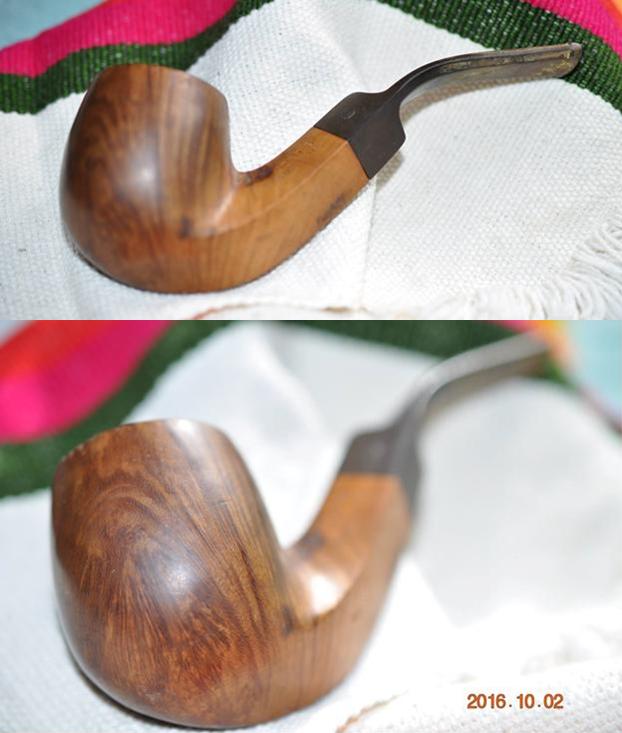 The next photos clearly show the stamping on the shank. The left side is stamped Jost’s over Supreme. The right side is stamped Imported Briar.
The next photos clearly show the stamping on the shank. The left side is stamped Jost’s over Supreme. The right side is stamped Imported Briar.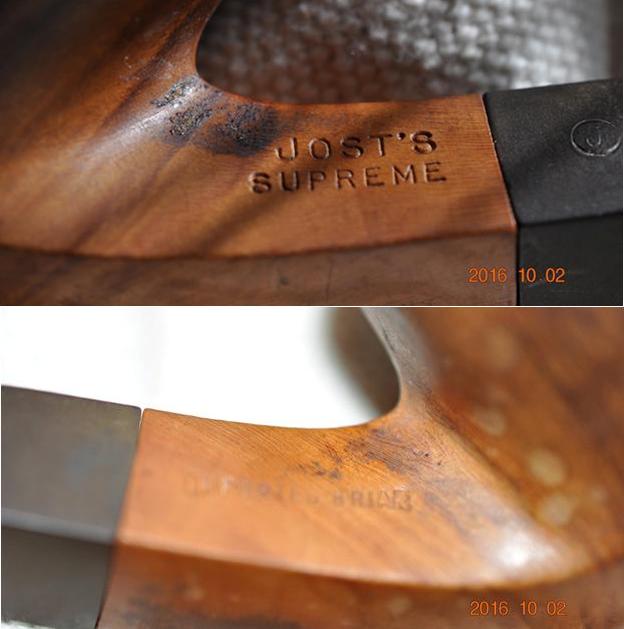 The bowl and shank had a sticky black substance on the top of the grain. It looked as if it may have come from sticky labels used by the antique shop where the pipe was sold.
The bowl and shank had a sticky black substance on the top of the grain. It looked as if it may have come from sticky labels used by the antique shop where the pipe was sold. The next close up photo shows the state of the cake in the bowl and the thick lava overflow on the top of the rim. It is hard to tell if the inner edge of the rim is damaged or not because of the thick cake. The second photo shows the nicks and cuts in the front top edge of the bowl and extending onto the rim.
The next close up photo shows the state of the cake in the bowl and the thick lava overflow on the top of the rim. It is hard to tell if the inner edge of the rim is damaged or not because of the thick cake. The second photo shows the nicks and cuts in the front top edge of the bowl and extending onto the rim.
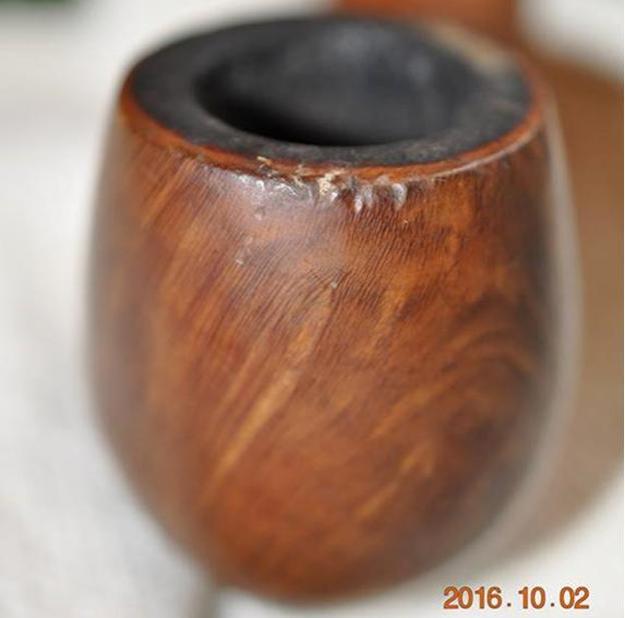 The stem was badly oxidized and there were a lot of tooth marks and chatter that had rounded the sharp edge of the button. The tooth marks and chatter were covered with calcification. The vulcanite was pitted and worn.
The stem was badly oxidized and there were a lot of tooth marks and chatter that had rounded the sharp edge of the button. The tooth marks and chatter were covered with calcification. The vulcanite was pitted and worn.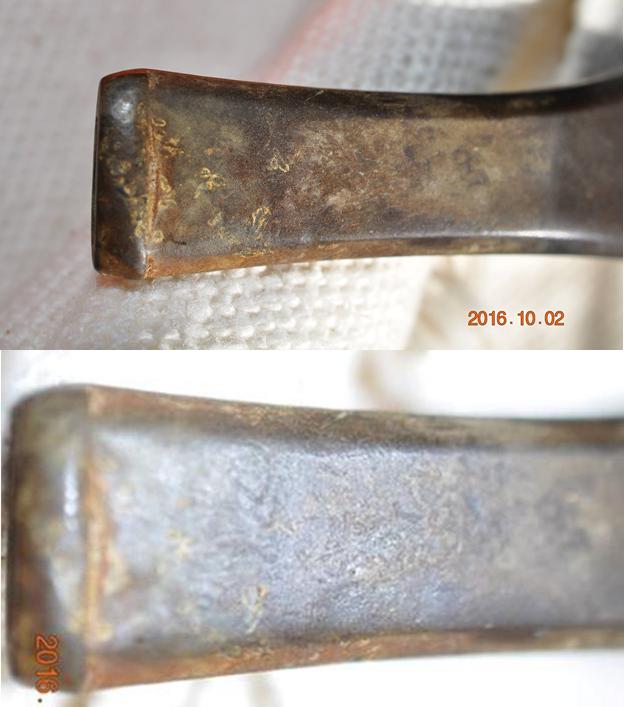 My brother did an amazing job cleaning up the pipe. He scrubbed the sticky surface and all of the tars and oils on the bowl and the rim. He scrubbed it with a tooth brush and Murphy’s Oil Soap and removed the soiled finish on the bowl and much of the rim top lava. He reamed the bowl with a PipNet reamer and took the cake back to bare briar. He scrubbed the mortise and the airway in the shank with pipe cleaners, cotton swabs and alcohol. I took the following photos when the pipe arrived in Vancouver before I started refurbishing it.
My brother did an amazing job cleaning up the pipe. He scrubbed the sticky surface and all of the tars and oils on the bowl and the rim. He scrubbed it with a tooth brush and Murphy’s Oil Soap and removed the soiled finish on the bowl and much of the rim top lava. He reamed the bowl with a PipNet reamer and took the cake back to bare briar. He scrubbed the mortise and the airway in the shank with pipe cleaners, cotton swabs and alcohol. I took the following photos when the pipe arrived in Vancouver before I started refurbishing it.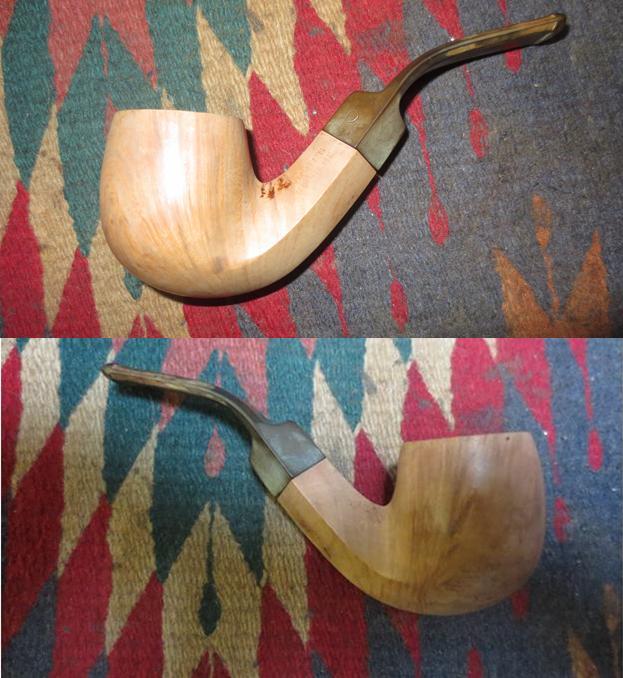
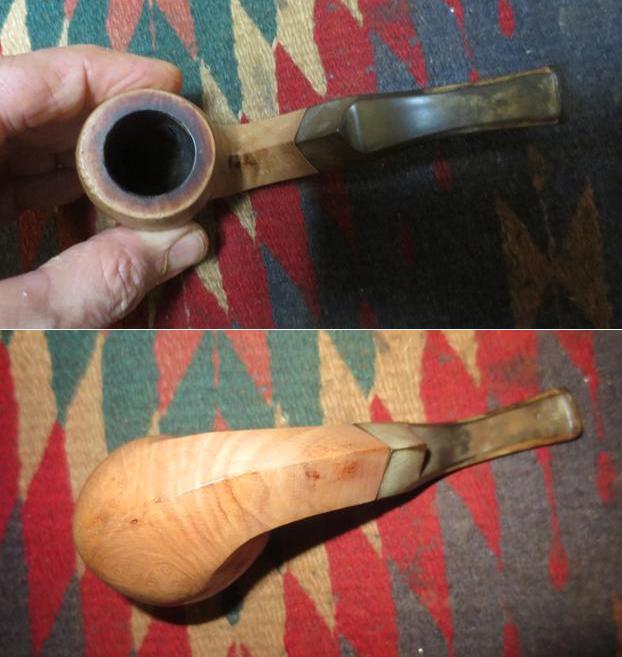 I took a close up photo of the rim top. He had gotten almost all of the lava off of the rim and all that remained was some slight rim darkening. I also took photos of the stem to show how much of the buildup had been removed before I got the pipe. There was a deep oxidation in the vulcanite.
I took a close up photo of the rim top. He had gotten almost all of the lava off of the rim and all that remained was some slight rim darkening. I also took photos of the stem to show how much of the buildup had been removed before I got the pipe. There was a deep oxidation in the vulcanite.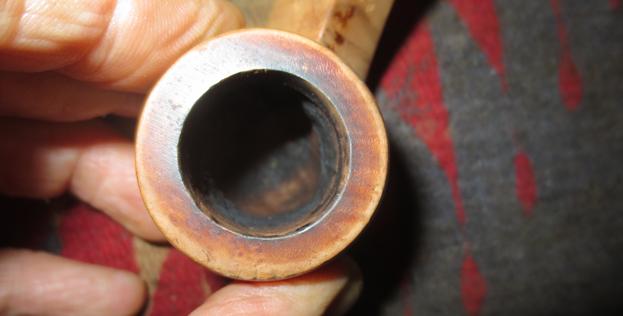
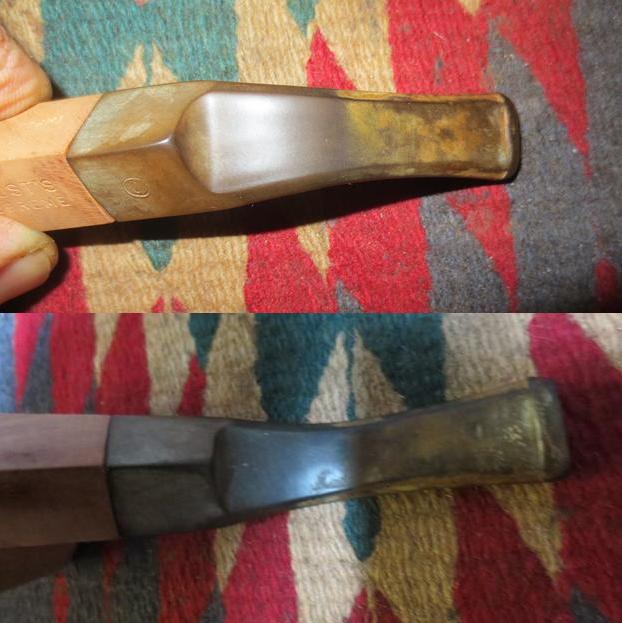 I used a Savinelli Fitsall Pipe Knife to clean up the reaming of the bowl. I smoothed out the remaining cake at the bottom edges of the bowl and smoothed out the inner edge of the rim.
I used a Savinelli Fitsall Pipe Knife to clean up the reaming of the bowl. I smoothed out the remaining cake at the bottom edges of the bowl and smoothed out the inner edge of the rim.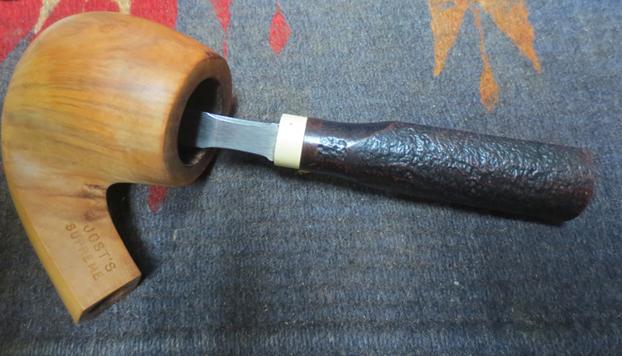 I used a dental pick with a slight spatula to scrape out the hard deposits of tar on the inside of the mortise. It took a little extra work but it cleaned up the buildup and made the stem fit against end of the mortise snugly.
I used a dental pick with a slight spatula to scrape out the hard deposits of tar on the inside of the mortise. It took a little extra work but it cleaned up the buildup and made the stem fit against end of the mortise snugly. I scrubbed out the mortise and the shank and stem airways with pipe cleaners, cotton swabs and alcohol to remove the debris from my scraping work in the mortise. It did not take too many before the pipe was clean on the interior.
I scrubbed out the mortise and the shank and stem airways with pipe cleaners, cotton swabs and alcohol to remove the debris from my scraping work in the mortise. It did not take too many before the pipe was clean on the interior.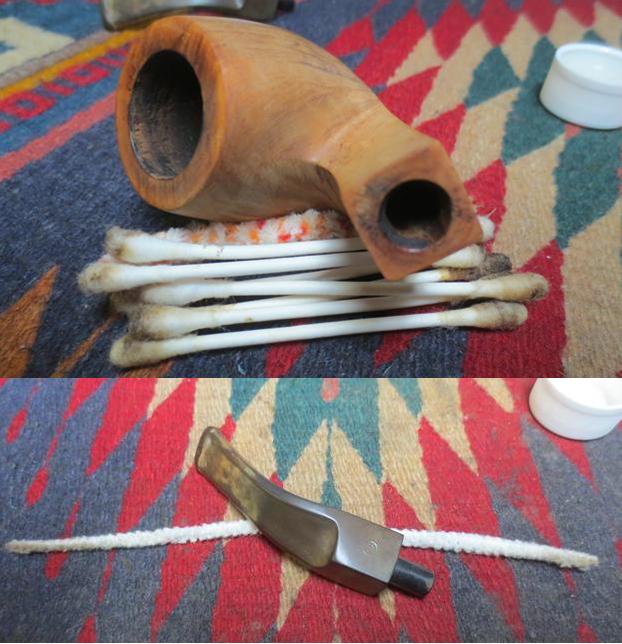 I sanded the rim with 1500-4000 grit micromesh sanding pads to remove the slight rim darkening that remained. I was able to polish the rim. I used clear super glue and briar dust to fill in the deep nicks and gouges in the front face and top edge of the bowl. I sanded the bowl front with 220 grit sandpaper to smooth the surface and to blend it in with the surrounding briar. I polished bowl at the same time as I did the rim with the micromesh sanding pads.
I sanded the rim with 1500-4000 grit micromesh sanding pads to remove the slight rim darkening that remained. I was able to polish the rim. I used clear super glue and briar dust to fill in the deep nicks and gouges in the front face and top edge of the bowl. I sanded the bowl front with 220 grit sandpaper to smooth the surface and to blend it in with the surrounding briar. I polished bowl at the same time as I did the rim with the micromesh sanding pads.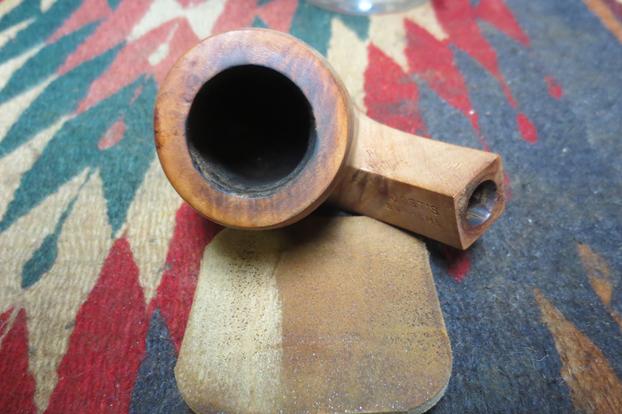 I used a needle file to sharpen the edge of the button and make it more defined. I sanded the stem with 220 grit sandpaper to remove the scratches on the stem left behind by the file and the oxidation in the surface of the vulcanite.
I used a needle file to sharpen the edge of the button and make it more defined. I sanded the stem with 220 grit sandpaper to remove the scratches on the stem left behind by the file and the oxidation in the surface of the vulcanite.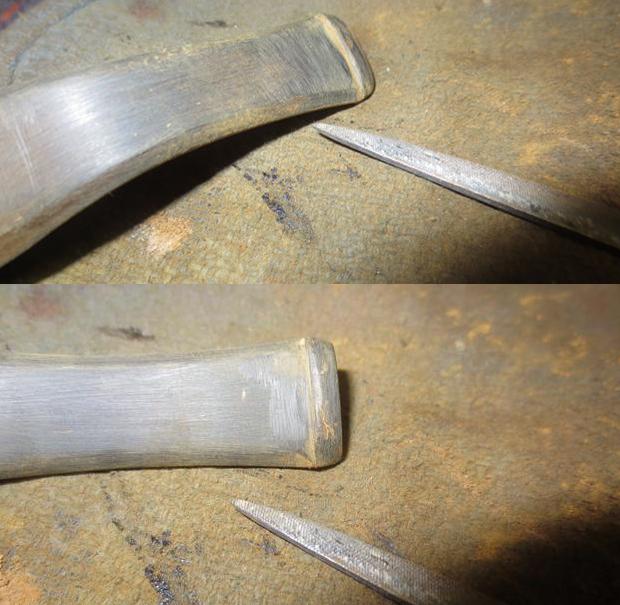 I sanded the bowl and the stem with a medium and a fine grit sanding pad to remove the scratches and to polish the briar and the stem.
I sanded the bowl and the stem with a medium and a fine grit sanding pad to remove the scratches and to polish the briar and the stem.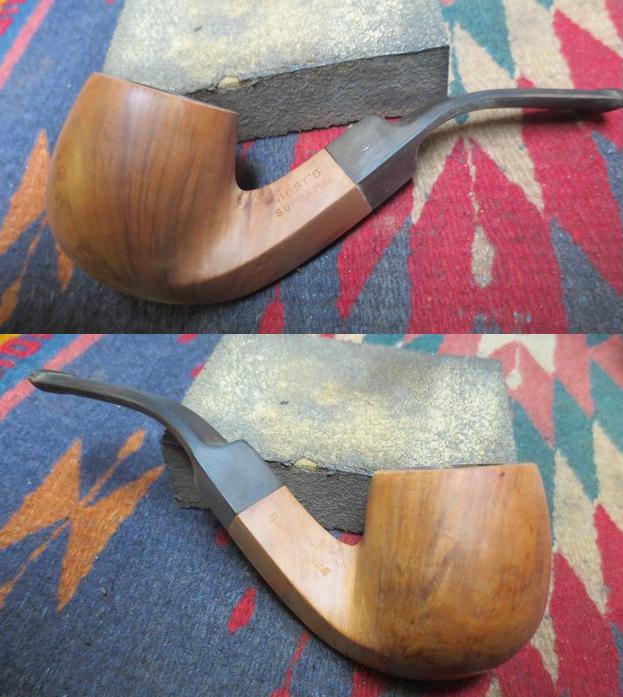
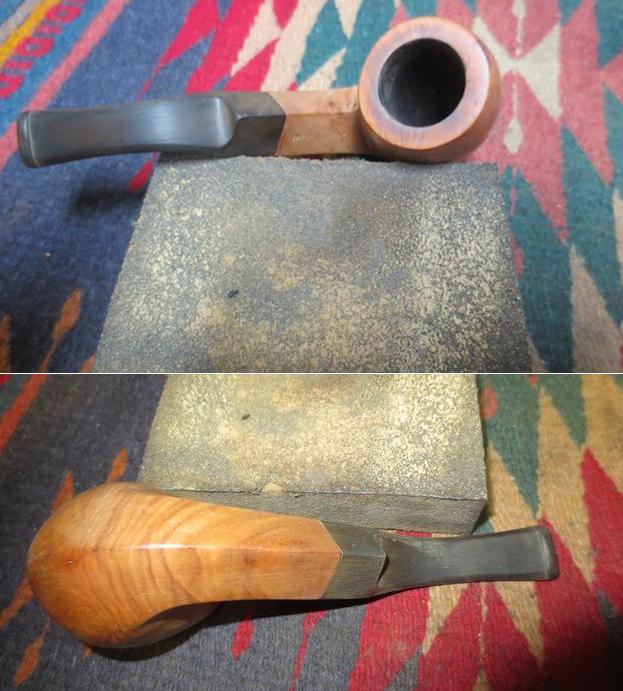 With the majority of the oxidation removed and the scratches in the briar I worked on polishing the stem. I wet sanded it with 1500-2400 grit micromesh sanding pads and dry sanded it with 3200-12000 grit pads. I rubbed the stem down with Obsidian Oil after each set of three pads. After rubbing the stem down with a final coat of oil after the last set of pads I set it aside to dry.
With the majority of the oxidation removed and the scratches in the briar I worked on polishing the stem. I wet sanded it with 1500-2400 grit micromesh sanding pads and dry sanded it with 3200-12000 grit pads. I rubbed the stem down with Obsidian Oil after each set of three pads. After rubbing the stem down with a final coat of oil after the last set of pads I set it aside to dry.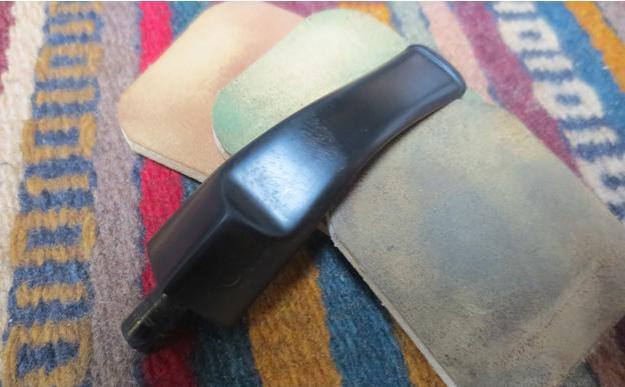
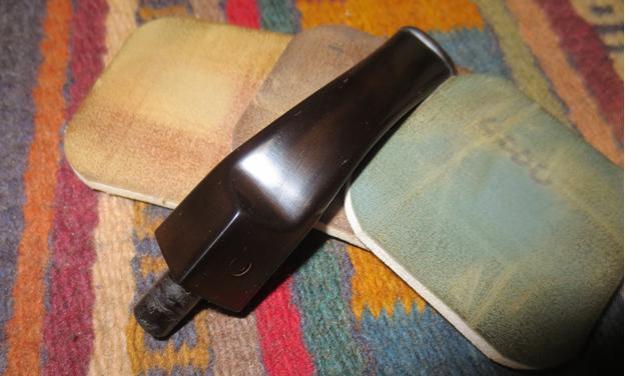
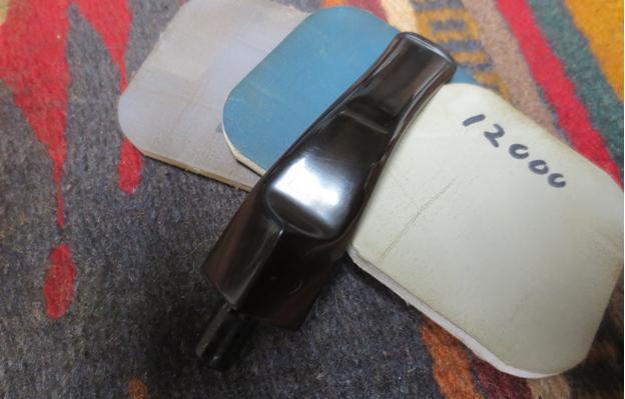 I buffed the stem with red Tripoli to further remove the light oxidation that remained in the vulcanite. I buffed both the bowl and stem with Blue Diamond on the buffing pad to polish it. I gave them multiple coats of carnauba wax and buffed it to a shine with a clean buffing pad. I hand buffed the finished pipe with a microfibre cloth to deepen the shine. The finished pipe is shown in the photos below. I really like the way it turned out. The grain of the briar really stood out. The natural finish looked really good and the contrast in the flame and straight grain with the underlying briar is quite stunning. Thanks for walking through this journey with me.
I buffed the stem with red Tripoli to further remove the light oxidation that remained in the vulcanite. I buffed both the bowl and stem with Blue Diamond on the buffing pad to polish it. I gave them multiple coats of carnauba wax and buffed it to a shine with a clean buffing pad. I hand buffed the finished pipe with a microfibre cloth to deepen the shine. The finished pipe is shown in the photos below. I really like the way it turned out. The grain of the briar really stood out. The natural finish looked really good and the contrast in the flame and straight grain with the underlying briar is quite stunning. Thanks for walking through this journey with me.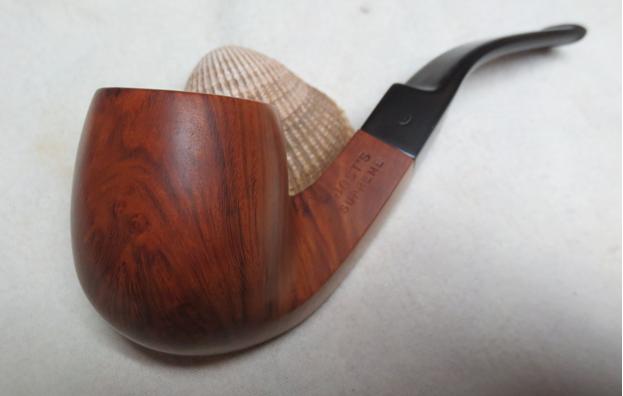
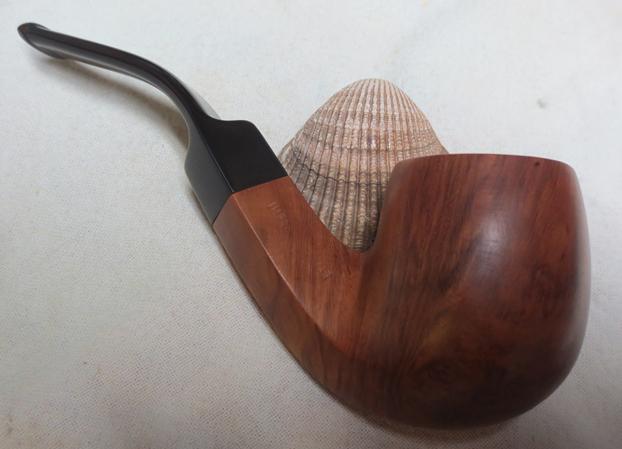
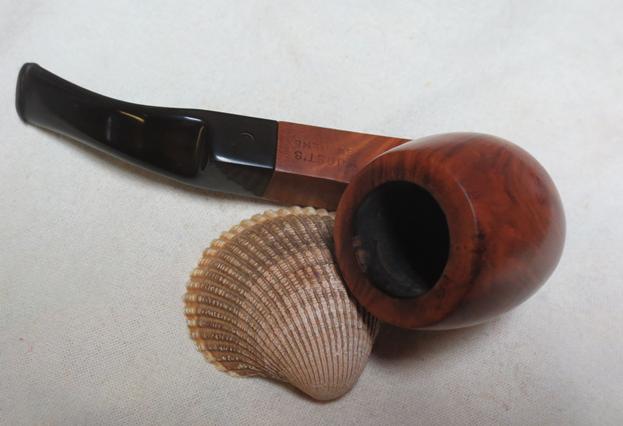
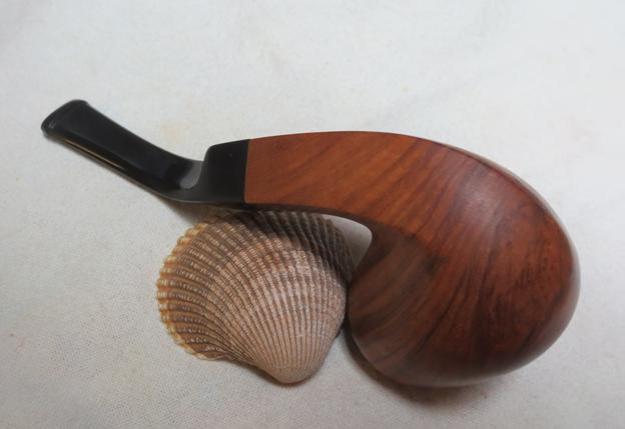
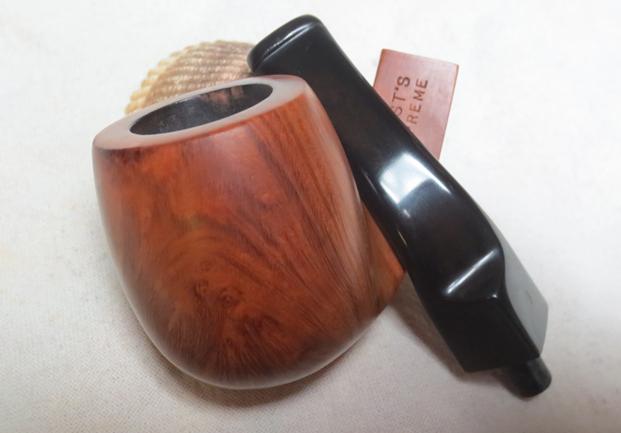
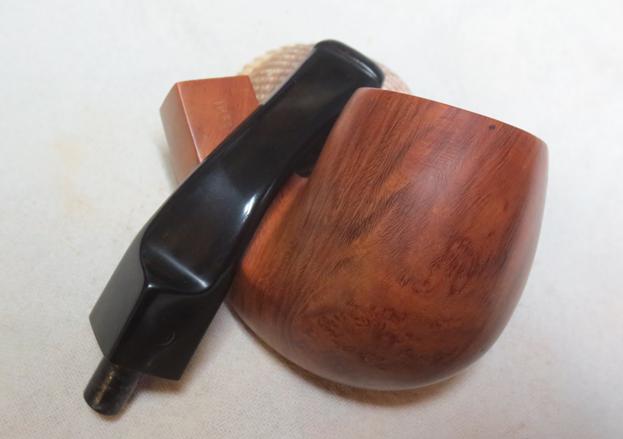
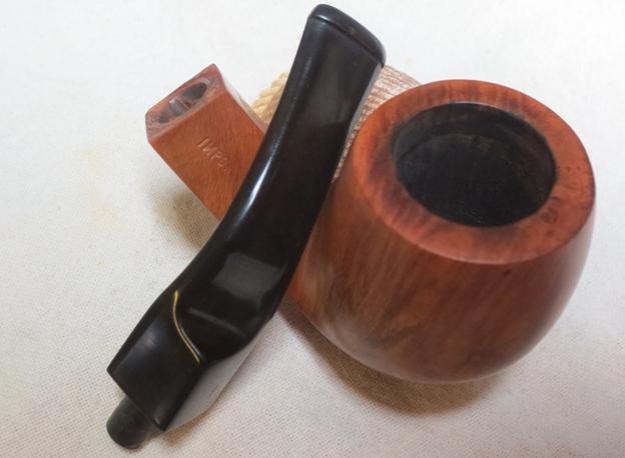
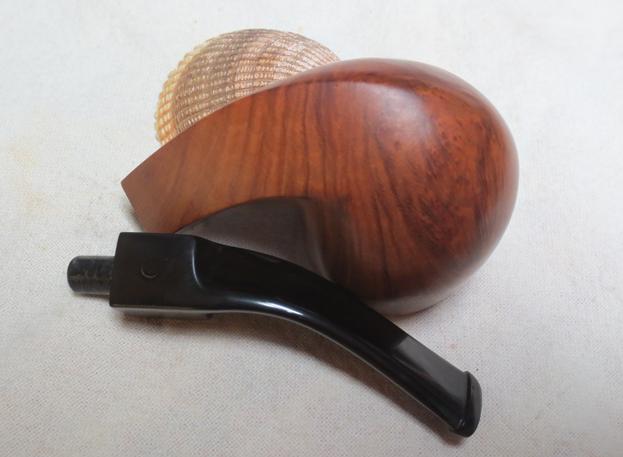
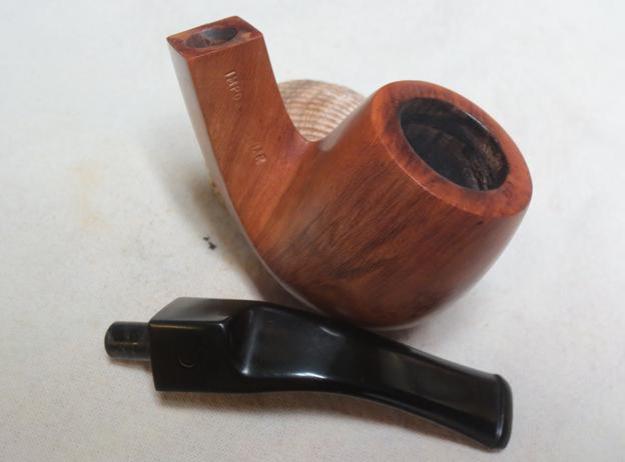

Pingback: Repairing a Cracked Shank and Banding a Jost’s Supreme Diamond Shank Bent Billiard | rebornpipes
That is a handsome pipe.
LikeLike
Although this is another amazing job I really wanted to say thank you. Thank you for all of the many times I have come here and found answers to so many of my questions. Thank you for so many times taking me down a wonderful journey when you write of a trip you take into a shop and I can can all but smell the wonderful odors and comfort of a place like that can bring. Thank you for giving me a place to come each day to get away from the daily frustrations and relax as I read so many varied fascinating aspects you share each day. It has now been years I have followed you each day and once again I have to say,
Thank you Steve.
LikeLiked by 1 person
Thanks William. I appreciate it that you have been around since the beginning of the blog. It has been a fascinating ride. Thanks for your comments as they really do speak to the heart of why i chose to write the blog.
LikeLike